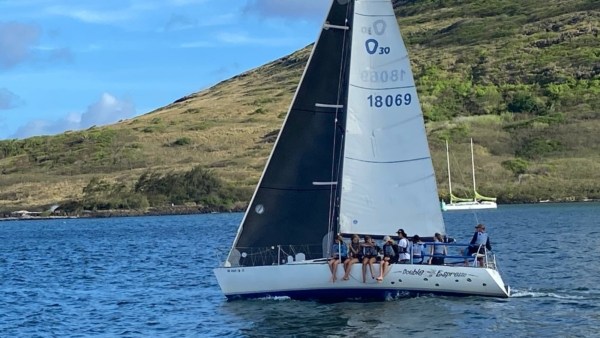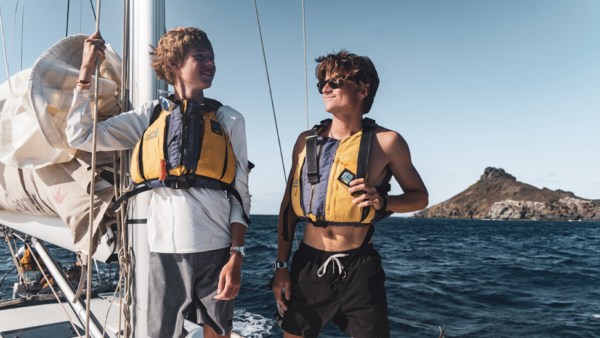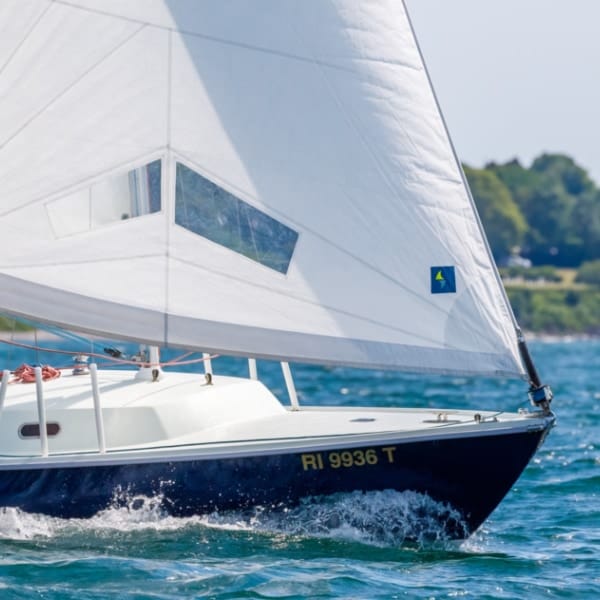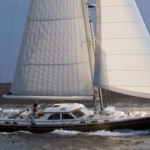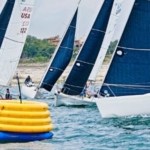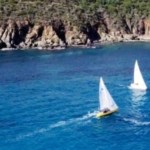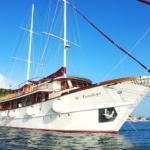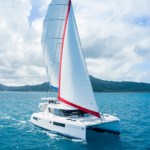How Would You Handle a Catastrophic Event on a Sailboat?
If you have a passion for sailing, you seek out sailing movies. If you are anything like the rest of us sailors, you most likely hold the belief that your experience, sailing education and grit could help you solve the problems and battle the elements in any situation.
That is called confidence. That confidence comes from sailing experience and proper sailing education. However, just how much can we handle? How much can we endure? Does Hollywood stretch the limits of our ability to survive?
While making it through our current state of things, I have spent my share of time catching up on movies and rewatching some sailing films. I realize that I could be a pirate like Capt. Jack Sparrow and that mutiny is possible if I continue to be too demanding of my crew. Also, Hollywood has led me to believe that if I get stranded on some deserted island, my co-star will be attractive but sinister.
In particular, two movies, have me thinking about my ability to make it out on the open ocean in a dire emergency.
All Is Lost:
Adrift:
While not everybody will go so far as to earn an ASA 108, Offshore Passagemaking certification, plenty of ASA certified sailors will embark on bareboat cruising with certifications up to ASA 104, Bareboat Cruising. An ASA sailing education is designed to help you get out on the water safely and confidently. ASA 104 will prepare you to be able to skipper a sloop-rigged, auxiliary powered keelboat of approximately 30 to 45 feet in length during a multi-day cruise upon inland or coastal waters in moderate to heavy winds (up to 30 knots) and sea conditions. You will have knowledge of provisioning, galley operations, boat systems, auxiliary engine operation, routine maintenance procedures, advanced sail trim, coastal navigation including basic chart plotting and GPS operation, multiple-anchor mooring, docking, health & safety, emergency operations, weather interpretation, and dinghy/tender operation.
What do you do if a shipping container hits your vessel? What happens if you sail into a massive hurricane while you go down below for a nap and your first mate is tossed overboard and you are forced to fend for yourself?
Okay, as much as those Hollywood storylines may be a bit farfetched, there are plenty of incidents, just like those documented. (Adrift is based on a true story).
Can You Survive?
Here are a few things that you will need to know if you find yourself in a catastrophic sailing scenario.
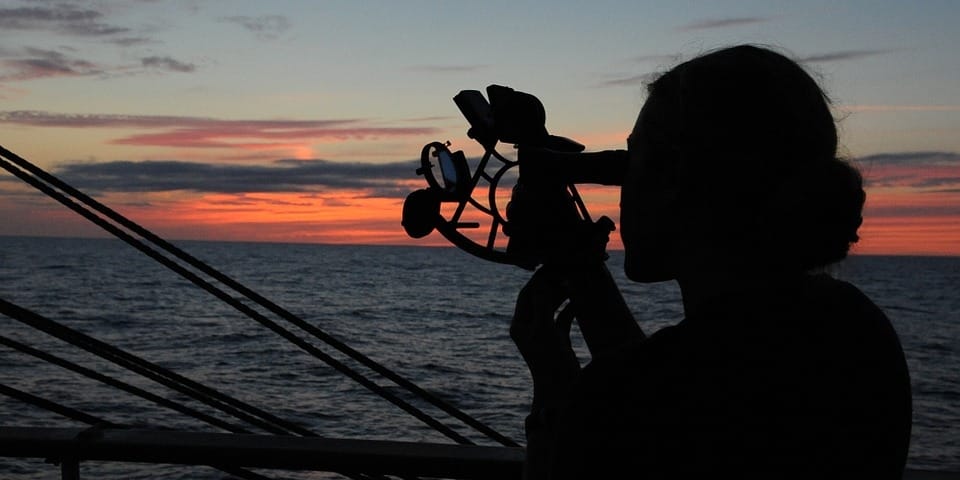
Navigating with a Sextant
Celestial Navigation is as old as sailing itself. The sextant was invented in the late 1700s; sailors and explorers have been using the sun and stars to travel for thousands of years. A little bit of math and some careful observations are what you need to find your location and eventually, your direction. With that said, do you know how to use a sextant?
Celestial Navigation is not complicated considering all you need is the sun, a watch, a sextant, and a nautical almanac. Get a reading at noon of your location using the sun, a watch to note the time, and a sextant. You’ll need a nautical almanac to get some more information, and you’ll be able to plot your location on your chart.
ASA 107 Celestial Navigation will prepare you to apply celestial navigation theory and practices for safe navigation of a sailing vessel in offshore waters.
Some of the basis of knowledge that is part of ASA 107 Celestial navigation:
- Convert longitude into time.
- Convert standard time and zone time to GMT and vice versa.
- Apply the corrections for index error, dip of the horizon, and total correction to convert sextant altitudes of the sun, stars, planets, and moon to true altitudes.
- Calculate the time of meridian passage of the sun and calculate the boat’s latitude from the observed meridian altitude of the sun.
- Determine the latitude at twilight by means of the Pole Star.
- Solve the navigational triangle using a navigation table.
- Determine the approximate azimuths and altitudes of the navigational stars and planets at twilight.
- Calculate and plot the lines of position obtained from observations of several celestial bodies at twilight and thus find the boat’s position.
- Advance the LOP obtained from a sun sight to another LOP obtained from the sun at a later time and find the boat’s position using a running fix (sun-run-sun).
- Calculate the true bearing of a low altitude celestial body in order to determine the error and deviation of the compass.
You’ll Need Fresh Water
There is no American Sailing Association course that will help you obtain freshwater; however, it is the knowledge you would need in a catastrophic emergency.
Can sailors drink seawater to survive?
The quick answer is NO.
Because the human kidney can only make urine that contains less salt than sea water it takes more water to eliminate the salt from your system. With that in mind, you would have to urinate more water than you have ingested. You would perish from dehydration. The body can process salt but not in the quantities that are present in seawater.
If you were stuck out on the ocean and your solar panels were not generating power that would mean that your water maker would not be working. There is such a thing as a solar still that will help you convert saline rich ocean water into drinkable fresh water. Again, this is a worst-case scenario plan but if you are going to be stranded you will need water.
“Humans cannot drink saline water, but, saline water can be made into freshwater, for which there are many uses. The process is called “desalination” – USGS Water Science School.
The USGS does an excellent job explaining creating your personal desalination plant using the sun and condensation to build your own still essentially.
- Use a large container to catch condensed water while placing a smaller “bowl” inside the container
- Cover the container loosely with a plastic sheet
- Be sure that the lowest part of the plastic sheet hovers directly over the bowl
- Leave your water “trap” overnight and water can be collected from the bowl in the morning
Is this foolproof? No. Will this produce enough water to quench your thirst when you are lost at sea and days away from civilization? I hope never to find out, but it is worth a shot if you have no water.
Can You Fix a Boat?
Any boat owner has tackled this question. Can I fix a bilge pump? Can I sew a sail? Can I clean a fuel line? Well, sailing movies that place us in the middle of a survival scenario are forcing us to consider if we could patch a hole in the boat or create a makeshift sail.
This seems easy, right?
Take a look at this video from BoatWorks Today and they seem to have enough resources to help you with learning how to fix your boat. Could you do this job without power tools while drifting out on the ocean just like Robert Redford?
This is part 2 of a 3 part series on how to fix a hole in your boat.
ASA 108 Offshore Passagemaking will touch on some subjects that will help you in the event of an emergency. You will be able to skipper a sailing vessel on extended offshore passages requiring celestial navigation. You will have knowledge of long-term passage planning, offshore vessel selection, sail repair, offshore first aid, watch-keeping, emergency procedures, abandon ship protocols, safety and seamanship.
You Should Learn How To Fish
If you find yourself drifting in the Pacific Ocean you should have fishing gear. (Soy sauce and wasabi are optional). It seems like Hollywood depicts sailors as people who can land a fish no matter the circumstances. I am here to tell you that no matter where I am sailing I have zero ability to catch a fish. I can sail. I can probably repair a boat. I understand a sextant and navigating with the sun.
I cannot fish. I would be very hungry if faced with more than 6 hours at sea without provisions.
Long story short, I better not go Adrift. I might not survive.
As much as we are having fun with Hollywood’s depiction of sailing and safety it is important to understand that ASA is committed to getting people out on the water safely and confidently. ASA certifications coupled with experience will prepare you to get out on the water and keep your vessel and your crew safe.
Keen to get started?
- Take our free online sailing course – it’s easy and fun and you’ll learn all about the world of sailing, one that some see as a sport and others choose as a lifestyle.
- Read about our ASA Certifications our accredited schools teach to sailing enthusiasts.
- Find a Sailing School and take sailing lessons to improve your sailing skills.


